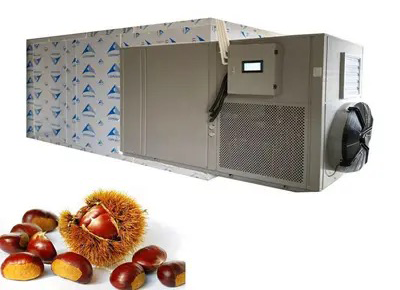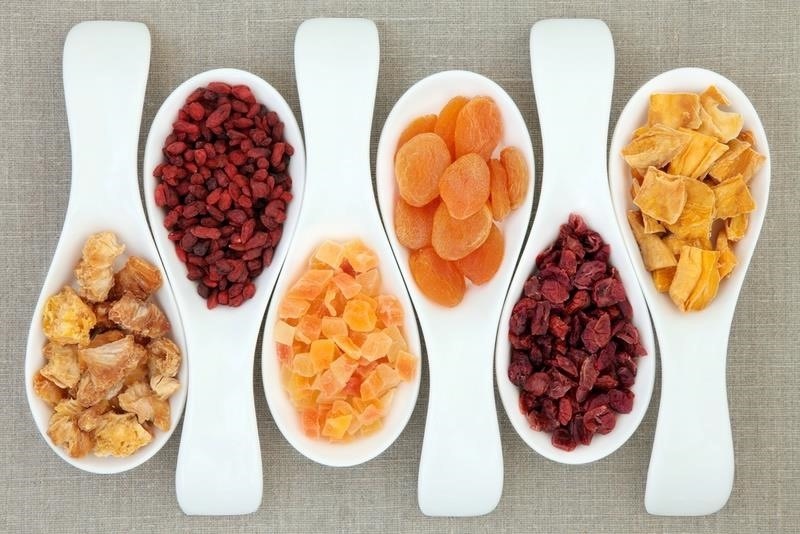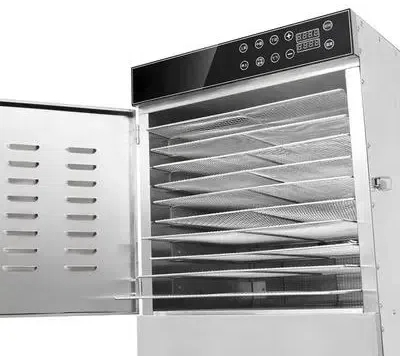
Content Menu
● Understanding Food Dehydrators
● Key Features to Consider in Food Dehydrators
● Heat Pump Technology in Food Dehydrators
● Comparing AEG Heat Pump Dryers with Food Dehydrators
● Practical Applications of Food Dehydrators
● Choosing the Right Food Dehydrator
● Maintenance Tips for Food Dehydrators
● Conclusion
● Frequently Asked Questions (FAQ)
>> 1. What types of foods can I dehydrate?
>> 2. How long does it take to dehydrate food?
>> 3. Do I need to pre-treat fruits before dehydrating?
>> 4. Can I use a regular oven instead of a dehydrator?
>> 5. How should I store dehydrated foods?
● Citations:
Food dehydrators have become essential appliances for both home cooks and professional chefs, allowing for the preservation of food while maintaining its nutritional value. As a manufacturer of food drying machines, understanding the features that set these machines apart is crucial. In this article, we will explore the key features of food dehydrators, with a particular focus on heat pump technology, which is also a hallmark of AEG dryers.

Understanding Food Dehydrators
A food dehydrator is designed to remove moisture from food, thereby preventing spoilage and extending shelf life. Unlike traditional cooking methods that often involve high temperatures, dehydrators operate at lower temperatures, ensuring that the food retains its nutrients and flavors.
- How It Works: Dehydrators use a fan to circulate warm air around the food placed on trays. This airflow facilitates moisture evaporation without cooking the food.
- Benefits: By removing moisture, dehydrators not only extend the shelf life of foods but also create healthy snacks like dried fruits, vegetable chips, and jerky.
Key Features to Consider in Food Dehydrators
When selecting a food dehydrator, several features are essential for optimal performance:
- Temperature Control: Adjustable temperature settings allow users to dehydrate various foods effectively. Different foods require different temperatures; for instance, fruits typically dehydrate best at around 135°F (57°C), while herbs may need lower temperatures around 95°F (35°C).
- Drying Time: Some dehydrators offer faster drying times due to better airflow and heating elements. However, it's important to balance speed with nutrient retention.
- Capacity: Depending on your needs, consider the size of the dehydrator. Larger units can handle bulk dehydration, making them ideal for families or businesses.
- Energy Efficiency: Energy-efficient models help reduce utility costs while providing effective drying capabilities.
- Ease of Use: User-friendly controls and clear displays can make a significant difference in your experience with a dehydrator. Look for models with intuitive interfaces that simplify the dehydration process.
- Noise Level: Some dehydrators can be quite noisy due to their fans. If noise is a concern, consider models designed for quieter operation.
Heat Pump Technology in Food Dehydrators
Heat pump technology is an innovative feature increasingly found in modern food dehydrators. This technology not only enhances energy efficiency but also improves drying quality.
- How It Works: Heat pumps recycle hot air within the machine, minimizing energy consumption while maintaining optimal drying conditions. This system allows for lower drying temperatures, which is gentler on food and helps preserve more nutrients.
- Advantages:
- Energy Savings: Heat pump dehydrators use significantly less energy compared to traditional models.
- Gentle Drying: Lower temperatures prevent over-drying and preserve delicate flavors and textures.
- Versatility: Suitable for a wider range of foods due to adjustable settings.
- Consistent Results: The ability to maintain stable temperatures leads to uniform drying results across all trays.
Comparing AEG Heat Pump Dryers with Food Dehydrators
While AEG heat pump dryers are primarily designed for laundry care, they share some technological similarities with food dehydrators. Here's a comparison:
| Feature | AEG Heat Pump Dryer | Food Dehydrator |
| Temperature Control | Yes (precise settings) | Yes (adjustable for different foods) |
| Energy Efficiency | High (A+++ rating) | High (especially with heat pump tech) |
| Drying Method | Uses heat pump technology | Circulates air at low temperatures |
| Capacity | Varies by model (up to 9 kg) | Varies by model (up to large batches) |
| User Interface | Digital display with multiple settings | Simple controls for temperature/time |
| Maintenance | Requires periodic filter cleaning | Easy cleaning of trays and surfaces |
Practical Applications of Food Dehydrators
Food dehydrators can be used in various culinary applications:
- Snacks: Create healthy snacks such as fruit leathers or vegetable chips. Dried fruits like apples and bananas make excellent portable snacks that are both nutritious and delicious.
- Meal Prep: Prepare ingredients in advance by dehydrating herbs or vegetables for later use. For instance, you can dehydrate tomatoes to make sun-dried tomatoes or dry basil for seasoning.
- Emergency Preparedness: Dehydrate foods for long-term storage in case of emergencies or natural disasters. Foods like grains and legumes can be stored dry for extended periods.
- Pet Treats: Homemade pet treats can be made by dehydrating meats or fruits suitable for dogs and cats, ensuring you know exactly what goes into your pet's diet.

Choosing the Right Food Dehydrator
When choosing a food dehydrator, consider the following factors:
- Size and Capacity: If you plan on processing large quantities at once, look for larger models with multiple trays. Compact models are suitable for smaller kitchens or occasional use.
- Material Quality: Stainless steel models tend to be more durable than plastic ones. Ensure that any plastic components are BPA-free if you're concerned about chemicals leaching into your food.
- Warranty and Support: A good warranty can provide peace of mind. Check if the manufacturer offers customer support in case you have questions or issues with your unit.
Maintenance Tips for Food Dehydrators
To ensure longevity and optimal performance from your food dehydrator:
- Regular Cleaning: After each use, clean the trays and surfaces according to the manufacturer's instructions. This prevents cross-contamination between different foods.
- Check Heating Elements: Periodically inspect heating elements for any signs of wear or damage. Keeping these components clean will ensure efficient operation.
- Store Properly: When not in use, store your dehydrator in a dry place away from direct sunlight to prevent any potential damage from humidity or UV exposure.
Conclusion
In conclusion, investing in a high-quality food dehydrator can significantly enhance your culinary capabilities by preserving food efficiently and healthily. With features like temperature control, energy efficiency, and innovative heat pump technology, modern dehydrators provide excellent options for both home cooks and commercial kitchens. Understanding these key features will help you choose the right model that suits your needs—whether you're looking to create healthy snacks or prepare ingredients in advance.

Frequently Asked Questions (FAQ)
1. What types of foods can I dehydrate?
You can dehydrate fruits, vegetables, meats (for jerky), herbs, and even some dairy products like yogurt.
2. How long does it take to dehydrate food?
Dehydration times vary based on the type of food and thickness but typically range from 4 to 12 hours.
3. Do I need to pre-treat fruits before dehydrating?
Some fruits benefit from pre-treatment (like dipping in lemon juice) to prevent browning and enhance flavor retention.
4. Can I use a regular oven instead of a dehydrator?
While you can use an oven at low temperatures, it is less efficient than a dedicated dehydrator and may not preserve nutrients as effectively.
5. How should I store dehydrated foods?
Store dried foods in airtight containers in a cool, dark place to maintain freshness and prevent moisture reabsorption.
Citations:
[1] https://royalangkor.ca/best-food-dehydrators/
[2] https://www.webstaurantstore.com/guide/741/food-dehydrators-buying-guide.html
[3] https://www.mitchellcooper.co.uk/what-is-a-dehydrator-commercial-buying-guide
[4] https://www.ao-business.com/p/reviews/tr718l4b-aeg-sensidry-technology-heat-pump-tumble-dryer-white-95381-126?order=DateAscending&page=4
[5] https://www.aeg.co.uk/laundry/laundry/dryers/heat-pump-dryer/tr959m6bc/
[6] https://www.aeg.co.uk/laundry/laundry/dryers/heat-pump-dryer/txh508a2r/
[7] https://etsolutions.in/how-to-select-the-best-food-dehydrator-for-fruits-and-vegetables/
[8] https://www.goodhousekeeping.com/appliances/a31904157/what-is-a-dehydrator/
[9] https://www.bestbuy.com/discover-learn/10-reasons-to-buy-a-food-dehydrator/pcmcat1634332391134
[10] https://www.stephstwogirls.co.uk/2016/10/aeg-heat-pump-tumble-dryer-t88595is.html
[11] https://www.aeg.co.uk/laundry/laundry/dryers/heat-pump-dryer/tr849p4b/
[12] https://www.aegnewzealand.co.nz/laundry/dryers/heat-pump-dryers/t8dhc862b/
[13] https://www.johnlewis.com/aeg-7000-tr718l4b-heat-pump-tumble-dryer-8kg-load-white/p6345011











